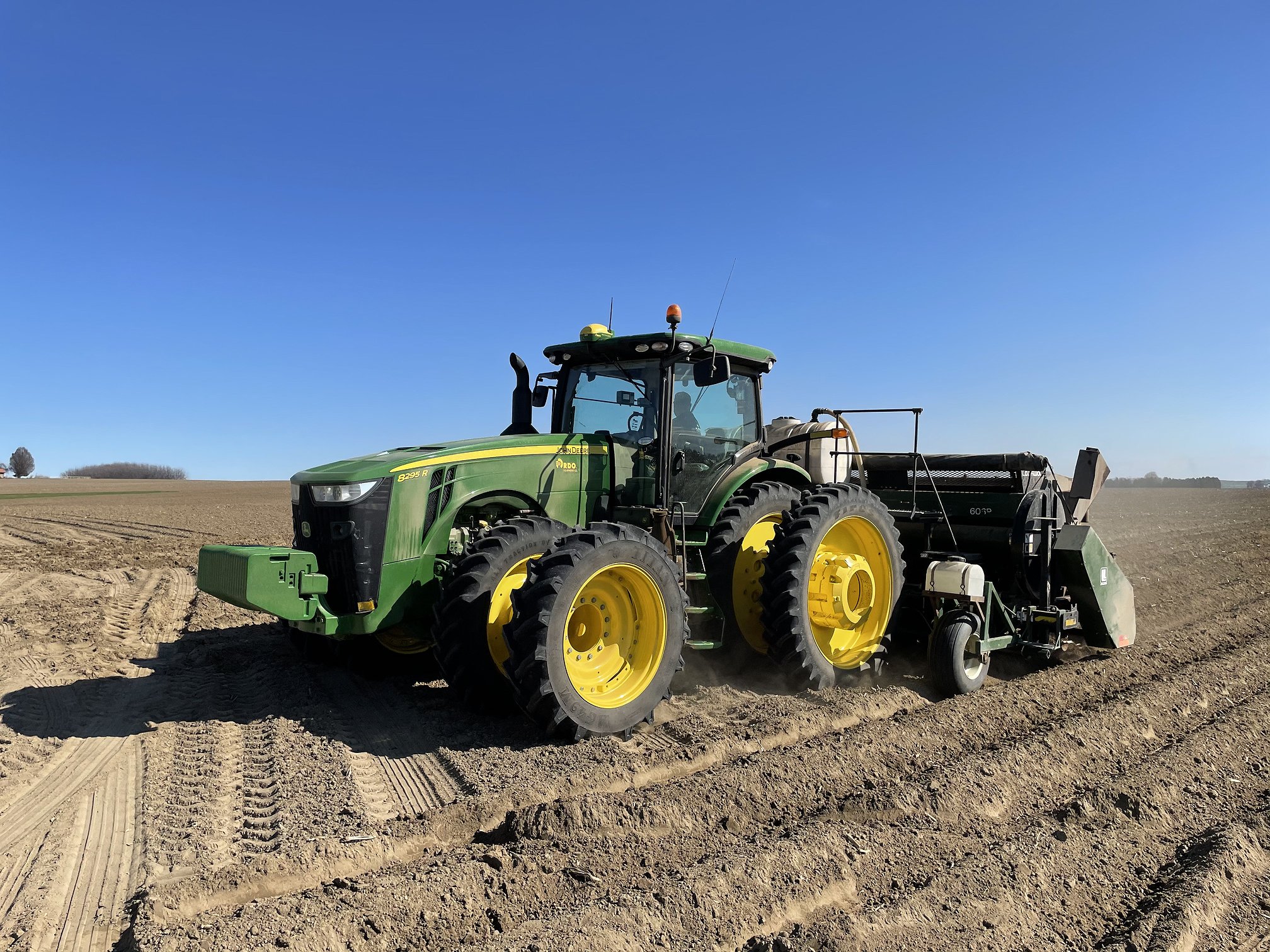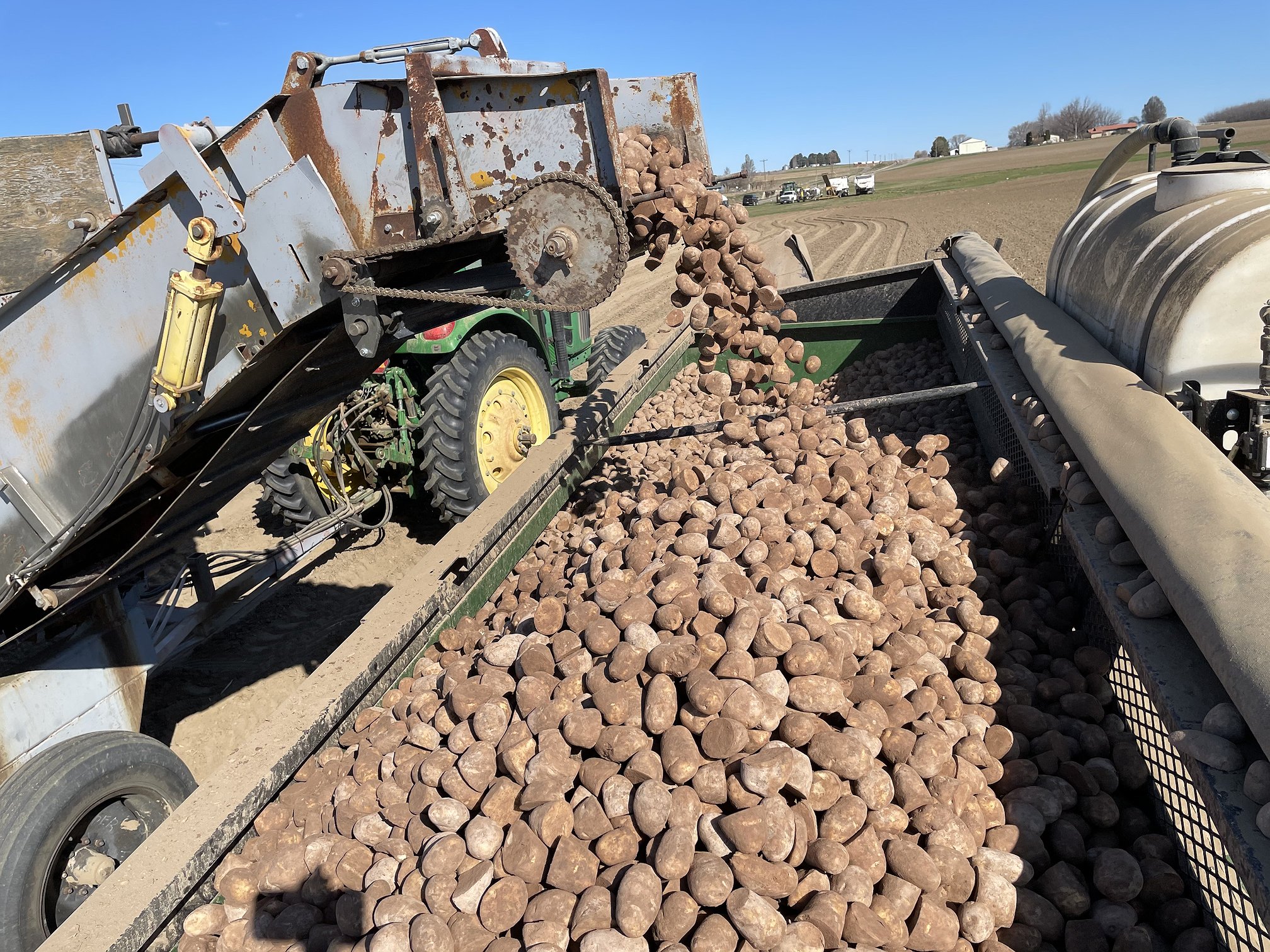Starting the cycle: Growers prepare for spring planting in the Basin
MOSES LAKE — Spring is fast approaching, which means it’s time to begin preparations for the spring planting season. Mark Kallstrom, of Kallstrom Sweet Corn, and Friehe Farms Manager Travis Meacham discussed what goes into preparing for spring planting at their respective farms.
Kallstrom grows and retails sweet corn, located halfway between George and Ephrata. Friehe Farms, located in Moses Lake, grows potatoes and corn, among other crops.
“Spring is a really busy time with lots going on,” Meacham said. “This time of year is really dedicated to getting equipment ready and everything lined up so that when the big bustle of spring comes we’re kind of pointed in the right direction and everything’s in good working order, so spending some shop time just prepping things and also ordering products, seed and fertilizer, to get ready for spring.”
Kallstrom explained the basics of his farm’s preparation.
“How we prep for it is, of course, we order our seed the first of the year, make sure the main variety that we want is available. Then we order plastic to get an early corn off. It speeds up the process by around two weeks when we plant in our plastic; the corn will come off two weeks earlier,” Kallstrom said. “Then this year, we plant anywhere from mid-March to the end of March. This year, it looks like it’s going to be pretty warm earlier, so we’ll probably plant between the 10th and the 15th of March…every year the weather’s so different.”
The preparations may include new changes to a farm’s operations, Meacham said.
“We plant kind of at the same time of year and, for the most part, we’re planting the same crops, but that’s ever-evolving,” he said. “We’re always looking for new ways to do it, ways to do things a little bit better, maybe ways to save a little bit of money, so there’s a constant evolution in what we’re doing, and that takes a lot of time and effort to be looking at that and making correct decisions.”
Kallstrom and Meacham both discussed taking this time of year as an opportunity to inspect equipment.
“Have your equipment ready to go,” Kallstrom said. “You want to go through your planter in the wintertime, so when spring comes, when you’re up against the wall, in case you need to do some repairs. Preparing your ground; when we plant our early sweet corn, we don’t have a chance to pre-irrigate, so you want to disk and pack the ground early so it traps the moisture…That kind of stirs the ground up and then the packer comes behind and packs that and kind of creates a seal on the ground.”
Meacham said ideally the farm can implement their plans when it actually comes time to plant.
“Hopefully, once the springtime comes we just implement everything that we kind of put in place,” Meacham said. “There’s a lot of planning that’s going on with prepping equipment, but also looking at new opportunities.
These new opportunities can be found in various places.
“By watching YouTube, and doing hours and hours and hours of research, I found a planter…that sprays your chemicals, can weed control, plants and covers the plastic over the top all on one pass,” Kallstrom said, “and I kind of copied that.”
Kallstrom elaborated on his learning experience with planting over the years.
“Learning to plant at certain dates – we plant up to 24 times a year – and learning to plant so it doesn’t get too old, so it’s always coming off fresh,” he said. “During the plant, I have a whole notebook on when to plant and so forth…just learning not to over plant or underplant so we don’t have too much or we don’t run out. That’s a big and expensive learning curve.”
Climate and weather also play a part in the spring planting season.
“Weather is still a huge factor, and yes, we kind of have the best-laid plans, but, you know, at times that changes things; the piece of equipment that is kind of ideal only works under certain environmental conditions.”
Meacham and Kallstrom both said choosing varieties is a large part of preparing for a new planting season. Kallstrom said varieties affect the flavor of the corn, how disease-resistant it is, how the corn holds up over time and more.
Cold-soil resistant seed is important due to the unpredictability of weather, Kallstrom said. By planting his seed underneath plastic, Kallstrom said he can keep the plants warmer, but there are risks to the method.
“If it’s like 80 degrees out, it’ll be over 100 degrees under that plastic,” Kallstrom said, “So you can you can burn your young seedlings.”
Kallstrom also said if you pull the plastic too soon, you can freeze the corn, something he said he learned the hard way.
Meacham said another important thing to consider during spring is getting the right employees and workers in the right places.
“People are very important to us and having people in the right place and understanding, making sure everybody’s on board,” Meacham said. “There are some that are kind of seasonal employment, and others are full-time people that stick around, but we have to make sure that everybody is still pointed the right way and kind of has the same goal in mind, especially if we bring new people on so that they understand how everything works too. So together it’s definitely an education process.”
Gabriel Davis may be reached at gdavis@columbiabasinherald.com.






